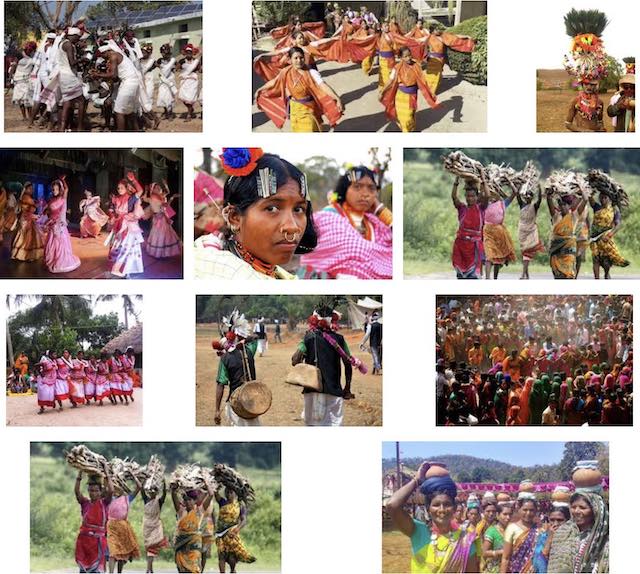Botanists at the Zamorin’s Guruvayurappan College, Kozhikode, have reported a new species of bryophyte (moss) from the New Amarambalam Forests in Nilambur, strengthening the case for declaration of the biodiversity-rich region as a wildlife sanctuary. […]
The paper authored by Dr. Manju and Dr. Rajesh has been published in the recent issue of Phytokeys, an open access journal dedicated to biodiversity research.
The new species was found growing on the branches of trees in the upper reaches of the Amarambalam Forests. “It is unique in many features,” says Dr. Manju, a bryologist, also associated with the Malabar Botanical Garden, Kozhikode. […]
It is confined to the New Amarambalam Forests and the Mukuruti National Park across the border in Tamil Nadu, both of which harbour a fragile ecosystem, home to a unique assemblage of plants and animals. The New Amarambalam forests is also the home of the Cholanaikar tribe, a nomadic aboriginal group of few members.
The plant was collected by Dr. Rajesh during a Rapid Biodiversity Assessment survey in the New Amarambalam Reserve Forest area. The study was organised by the Malabar Natural History Society (MNHS) of Kozhikode for the Kerala Forest Department, under plans to designate the forest as a high value biodiversity area.
The survey supported by the Kerala Science, Technology Environment (KSCSTE), revealed the rich biodiversity of the area, and the need for better protection.
“There was a plan to designate the forests of New Amarambalam as a wildlife sanctuary. That proposal has failed to materialise due to various reasons. We strongly feel that this area deserves better conservation status, taking into account the rich biodiversity waiting to be discovered,” says Dr. Rajesh.
Source: “New moss species found in New Amarambalam forests” by T. Nandakumar, The Hindu, Thiruvananthapuram, 12 December 2012
Address : http://www.thehindu.com/todays-paper/tp-national/tp-kerala/new-moss-species-found-in-new-amarambalam-forests/article4190523.ece
Date Visited: Wed Mar 20 2013 16:05:09 GMT+0100 (CET)
“What we are telling to the outer world is that no conservation would be possible without cooperation of the local community [and] integrating their traditional wisdom with modern-day scientific approach.” – WWF’s Kerala consultant KH Amitha Bachan | Learn more: Biodiversity | Climate change | Ethnobotany & ethnomedicine | Nature and wildlife | Sacred grove | United Nations on climate change >> >>
Up-to-date reports by Indian experts and journalists
Search tips
Combine the name of any particular state, language or region with that of any tribal (Adivasi) community.
Add keywords of special interest (music, poetry, dance just as health, sacred grove and biodiversity); learn about the rights of Scheduled Tribes such as the “Forest Rights Act” (FRA); and the United Nations “Declaration on the Rights of Indigenous Peoples”, “Universal Declaration of Human Rights”, “women’s rights”, or “children’s right to education”.
Specify any other issue or news item you want to learn more about (biodiversity, bonded labour and human trafficking, climate change, ecology, economic development, ethnobotany, ethnomedicine, global warming, hunter-gatherers in a particular region or state, prevention of rural poverty, water access).
For official figures include “scheduled tribe ST” along with a union state or region: e.g. “Chhattisgarh ST community”, “Himalayan tribe”, “Scheduled tribe Tamil Nadu census”, “ST Kerala census”, “Particularly Vulnerable Tribal Group Jharkhand”, “PVTG Rajasthan”, “Adivasi ST Kerala”, “Adibasi ST West Bengal” etc.
In case the Google Custom Search window is not displayed here try the following: (1) toggle between “Reader” and regular viewing; (2) in your browser’s Security settings select “Enable JavaScript” | More tips >>
Note: hyperlinks and quotes are meant for fact-checking and information purposes only | Disclaimer >>
List of websites covered by this Google custom search engine
Academia.edu (platform for academics to share research papers) – www.academia.edu
Archive.org – https://archive.org
Centre for Science and Environment – https://www.cseindia.org
Current Conservation – https://www.currentconservation.org
Development and Cooperation (D+C) https://www.dandc.eu
Down To Earth (India) – www.downtoearth.org.in
India Environment Portal – www.indiaenvironmentportal.org.in
Harnessing Nature Magazine – https://harnessingnature.online
Mongabay-India – https://india.mongabay.com
M S Swaminathan Research Foundation – www.mssrf.org
Navdanya (protecting India’s biodiversity based food heritage) – https://navdanya.org
Third World Network (Penang, Malaysia) – https://twn.my
The Shola Trust (nature conservation in the Nilgiri region) – www.thesholatrust.org

Indian online periodicals and platforms | Images view >>
~ ~ ~
Personalize your CustomSearch by combining other search words >>
(e.g. name of a tribal community and region, a craft, or dance and puppetry)
Research the above issues with the help of Shodhganga: A reservoir of theses from universities all over India, made available under Open Access >>
Note: hyperlinks and quotes are meant for fact-checking and information purposes only | Disclaimer >>
See also
Accordweb.in | Accord | Articles by co-founder Mari Marcel Thekaekara | Shola Trust
Atree.org | Ashoka Trust for Research in Ecology & the Environment (posts)
Climate change | Audio | The Climate Question (BBC Podcast)
Environmental history and what makes for a civilization – Romila Thapar
Equations blog (Equitable Tourism Options)
Information provided by Indian government agencies and other organizations (FAQ)
Nature and wildlife | Crocodile | Elephant | Tiger | Mangrove forest | Trees
PARI’s tales from tiger territory | People’s Archive of Rural India (PARI)
United Nations on climate change
What is the Forest Rights Act about?
Who is a forest dweller under this law, and who gets rights?
Tips for using interactive maps
Toggle to normal view (from reader view) should the interactive map not be displayed by your tablet, smartphone or pc browser
For details and hyperlinks click on the rectangular button (left on the map’s header)
Scroll and click on one of the markers for information of special interest
Explore India’s tribal cultural heritage with the help of another interactive map >>
